Following the launch of the England Netball archives early in March 2019, President of England Netball Lindsay Sartori was interviewed on The Netball Show about the history of the sport. Take a listen here:
Posts categorised in: sport
Heritage Quay Teaching Resources
Heritage Quay has developed six educational films for teachers of KS1-3 students. They are based on our amazing collections and provide opportunities to explore history, the arts and music in inspiring ways. You can access the films on youtube, and download the free teachers packs using the links below. To find out more about what else we offer for schools please visit our Learn page
SPORT
This film serves as an introduction to the sport collections at Heritage Quay and highlights the history of Rugby League and the sport’s close links with the town of Huddersfield. The film and the accompanying education pack provide a focus for a local history study as set out in the KS2 national curriculum.
https://www.youtube.com/watch?v=_RvPSTg18hU
Education Pack 1 SportFINAL
THE ARTS
The Arts scene in Huddersfield is a major area of strength in the archives. This film gives an introduction to the development of British theatre and highlights items from the Lawrence Batley Theatre, Huddersfield Operatic and Dramatic Society, and Mikron Theatre collections.
https://www.youtube.com/watch?v=aQ2tjSy1TG0
Education Pack 2 The Arts FINAL
EDUCATION
This film gives an introduction to the history of the University of Huddersfield, highlighting the role of Frederick Schwann and the Ramsden family in its history. It provides a focus for KS2 local history study. Items shown in the film include commemorative china which marked the opening of the Ramsden building, and the bell which called students to their classes.
https://www.youtube.com/watch?v=P42QZEFmnf8
Education Pack 3.EducationFINAL
MUSIC
This film highlights the rich variety contained within the music collections at Heritage Quay. From brass bands to dance bands, contemporary music to classical, this is an accessible introduction to a range of musical genres for those studying music at primary level.
https://www.youtube.com/watch?v=UBu3QuBksiA&t=1s%20
Education Pack Music 4FINAL
INDUSTRY
The film gives an overview of Huddersfield’s development as a textile town, highlighting the links between textiles and manufacturing, and focusing on local engineers Hopkinsons, whose archive is one of the largest and most complete at Heritage Quay. The film is a valuable starting point for a KS2 local history study, as well as supporting the KS3 themes of industry, empire and technological change. The Fabrics of India sample books shown in the film may inspire and interest textile students.
https://www.youtube.com/watch?v=dLpSKdq9ucg
Education Pack 5. Industry FINAL
POLITICS
This film introduces the collections of three significant figures which are prominent in the archives – Robert Blatchford, Victor Grayson and John Henry Whitley. The film gives a brief outline of their achievements in bringing about social and industrial improvements for working people and invites the viewer to consider their legacies. The film is intended for a primary audience, however it provides a good starting point for KS3 students studying British politics between 1860 and 1939.
https://www.youtube.com/watch?v=qbk25CtxpLU
Education Pack Politics 6 FINAL
Key Collections Series: Sport
The Rugby Football League (RFL) was founded in Huddersfield in 1895, so it is fitting that the archives of the RFL, the Huddersfield Past Players Association, the Up and Under oral history project and the papers of MEP Terry Wynn, can be accessed in Heritage Quay.
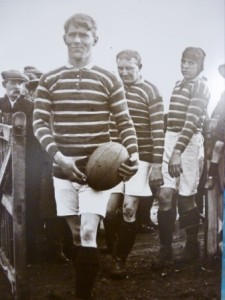

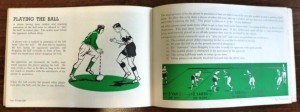
The rugby league collections present an unmatched history of the sport through unique documents such as minute books, player registers and correspondence. There is also the opportunity to get close to rare match programmes, photographs, tickets and one-of-a-kind shirts, caps and balls.
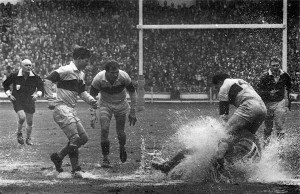
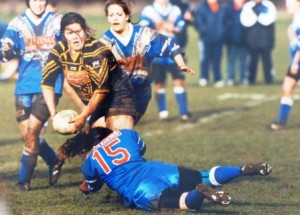
The archives offer a fascinating insight into social history from the late 19th century to the present day. At Heritage Quay you can explore the history and identity of the working classes; understand the importance of gender and regional identity in the sport; and discover the international reach of a sport born in Huddersfield.
Smaller collections on cricket are also held, including a full set of Wisden.
Catalogued Collections
Printed Cricket Collection – http://heritagequay.org/archives/CRI/
Hodgson Cricket Collection Archive – http://heritagequay.org/archives/DH/
Rugby Football League Archive http://heritagequay.org/archives/RFL/
Terry Wynn, MEP Archive – http://heritagequay.org/archives/TW/
You can browse through and download a hard copy version of these catalogues on our ISSUU profile here: https://issuu.com/heritagequay/docs/heritage_quay_sports_collections_ca
Uncatalogued Collections
Huddersfield Rugby League Players Association Archive – http://heritagequay.org/archives/HPA/
Up and Under Project Archive – http://heritagequay.org/archives/?keyword=Up+and+under+project
Wombwell and Oxford Authentics Cricket Club Archive – http://heritagequay.org/archives/?keyword=authentics
Pursue your own research using the collections
Find out about our events exploring the collections- many free
‘Curly’ Mallalieu – Author, Naval Officer, Journalist, Freeman of Kirklees & Huddersfield MP of 34 years!
We are very pleased to announce that the archive of Sir Joseph Percival William Mallalieu (18 June 1908 – 13 March 1980) has now been fully catalogued and made accessible for the first time.
The catalogue can be accessed here: http://heritagequay.org/archives/JPM/
To say that ‘Bill’, ‘William’ or ‘Curly’ Mallalieu (as he was known to various people) had an interesting and varied career would certainly be an understatement! And to prove it, here’s a biography of his life that we’ve pulled together using the records that are now available in the archive.

JPW Mallalieu was born in Delph, Saddleworth, on 18 June 1908 into a Nonconformist family with a rich political background. His father, Frederick Mallalieu, was Liberal MP for Colne Valley from 1916 until 1922, when he was defeated by Philip Snowden, the first Labour Chancellor of the Exchequer. While his brother, Sir Edward Lancelot ‘Lance’ Mallalieu, was also Liberal MP for the Colne Valley constituency, 1931-1935, before he joined the Labour Party and served as MP for Brigg, Lincolnshire, from 1948 until he retired in 1974.
Like his father and brother, JPW Mallalieu studied at Dragon School, Cheltenham before going on to Trinity College, Oxford where became the first person in history to win a Rugger Blue and be president of the Oxford Union. After Oxford, Mallalieu won a Commonwealth Fellowship in economics at the University of Chicago and spent two years in the United States engaged in economics research. While in America Mallalieu underwent a political conversion from Liberalism to Socialism after witnessing the depravity brought about by the Great Depression; this led him to join the British Labour Party from Chicago in October 1931. During his time in America Mallalieu also began his career as a journalist, working on local newspapers in Kentucky, including The Lexington Herald where he covered stories such as the Police beat and sports, notably American Football and ice hockey. He then spent six months in South Africa and seven months in continental Europe, mostly in France, before returning to Britain in 1932 and being appointed American Editor for The Financial News in London. Mallalieu was then made political correspondent for the paper and spent a year and a half reporting from the House of Commons. Mallalieu continued to write for London newspapers from 1933-1942, including The Financial News, The Evening Standard, The Daily Express, he also wrote sports journalism for the Spectator.
Upon his return to Britain at the end of 1932 Mallalieu joined the Holborn Labour Party. He was then adopted as the Labour candidate for Huddersfield in 1936 but because of the intervention of war it was another nine years before he got the chance to fight his first Parliamentary election.
Mallalieu started the Second World War as a Conscientious Objector which he said was ‘entirely for political reasons’ because he didn’t believe in the Chamberlain government of the time, but he quickly changed his mind upon realising the intent of the Nazi leadership. He joined the Royal Navy in 1942 as an ordinary seaman and rose to the rank of Lieutenant by the end of the War. His active service involved protecting the convoy routes to Russia through the Arctic waters, he served on board a destroyer which was camouflaged as HMS Meltham. During his service he wrote the novel Very Ordinary Seaman (1944) which was based directly on his experiences of serving in the navy during wartime. The navy had appointed him to the role of Commander’s Messenger, Portsmouth, and gave him two months in which to complete the work; the only condition was that the book should be ‘broadly favourable to the navy. Not a whitewash but not a hatchet job either’ (On Larkhill, p.204). The book proved to be very popular, selling 64,000 copies in hardback and many more in paperback. Speaking to Yorkshire Life magazine in 1979, Mallalieu answered the question of why he had chosen that title for the book, ‘Because that’s what I was, a very ordinary seaman. I couldn’t even tie knots properly.’ (Yorkshire Life, March 1979). The royalties for the book would see Mallalieu through his election campaign in 1945 when he had no other source of income.

Very Ordinary Seaman was Mallalieu’s third book. He had written his first, Rats, in a London air raid shelter during the blitz. The book was a criticism of big business that profited from the war (e.g. munitions companies), and was published in 1941 under the pseudonym, The Pied Piper. He wrote his second book, Passed to You, Please, in 1942 in a Huddersfield nursing home where he underwent an operation shortly before he enlisted in the navy. This book was a criticism of the bureaucracy, red-tape and inefficiencies of the Civil Service.
During his naval service in Portsmouth he met Rita Tinn (Harriet Rita Riddle Tinn) who was an officer in the Wrens (Women’s Royal Naval Service). Rita was the daughter of Jack Tinn, manager of Portsmouth Football Club, and prior to the War Rita had worked as her father’s Secretary, where she was the only female executive in football at the time. Mallalieu and Rita were marred in 1945 shortly before the General Election took place on 5 July. They went on to have two children; Ann Mallalieu (later Baroness Mallalieu QC) was born on 27 November 1945 and was Christened at the House of Commons in the same year (photos of this occassion can be found within the archive); and Ben Mallalieu, who wrote the tailpiece to his father’s final book On Larkhill.
JPW Mallalieu left the navy as a Lieutenant to fight the General Election as the Labour candidate for Huddersfield. Throughout the election campaign JPW and Rita Mallalieu stayed with Arthur Gardiner who was Secretary for the Huddersfield Labour Party and Mallalieu’s agent and friend. Upon opening his election campaign at Northumberland Street School in June 1945, Mallalieu declared that ‘I have not the slightest intention of sailing under any false colours. I am a Socialist, and it is as a Socialist and nothing else that I am going to ask for your votes on July 5.’ Mallalieu won the election, achieving the biggest swing of votes in the country, converting the previous Liberal majority of 13,000 into a 9,000 majority for Labour. On the day that the result was announced he addressed a crowd in Huddersfield’s Beast Market estimated to be 20,000 strong.
Of his work in Clement Atlee’s post war government (1945-1951) Mallalieu said that it was ‘A really exciting period… we had a tremendous programme and we worked steadily through that torrent of legislation. I suppose it really spoiled us. There was nothing like it again… I remember one week when we had three all-nighters in a row. One evening I went on to the Commons Terrace for a breath of fresh air, sat down on one of the benches and was awakened next morning by the sound of traffic going across Westminster Bridge. It was 11am, and I suddenly realised I had slept on the terrace all night!’ (Interview published in many national newspapers on 14 Aug 1978).
Upon reaching parliament Mallalieu gravitated to the left of the party, often following the movements of Aneurin “Nye” Bevan, which sometimes brought him into conflict with the rest of the party. After voting against the Ireland Bill in 1947, he was sacked as Private Secretary to John Strachey, Ministry of Food. He also found himself in conflict with a large section of the Party in 1953 when in an article for The Tribune he suggested that many Labour MPs only pretended to agree with left-wing policies in public but secretly voted with the right wing of the Party in parliament. He argued that to prevent this Labour MPs should vote on policy decisions by voice rather than secret ballot, which was against Labour Party rules. This resulted in an NEC meeting to discuss whether he should be expelled from the Party, but Mallalieu managed to retain his position by apologising for his comments.
JPW Mallalieu went onto be Member of Parliament for Huddersfield 1945-1950, and then for Huddersfield East, 1950-1979, following boundary changes to the Kirklees area. In 1964 Labour won the General Election for the first time in 13 years, and Harold Wilson appointed Mallalieu to various ministerial positions over the course of his term. First Junior Navy Minister (1964-1966) and then Minister of Defence for the Royal Navy (1966-1967), before being appointed Minister of State at the Board of Trade (1967-1968) and the Ministry of Technology (1968-1969). During his time as Minister of State at the Board of Trade, Mallalieu instituted new safety measures for merchant shipping and trawlers at a time when ships were being constantly lost at sea. These measures centred around the idea of having a “mother” ship in the middle of any shipping fleet that was captained by a naval officer who had the authority to return ships back to port if the weather became too dangerous.

Throughout his political career Mallalieu continued as a writer and journalist. In the 1950s he continued writing sporting essays for the Spectator and wrote political commentaries for the Tribune and the New Statesman. On radio he was a regular member of the Any Questions? panel for over 20 years, and on television he was one of the first members of the Tonight team and one of the four regular presenters of What the Papers Say on Granada TV during the 1950s. He also went on to publish four more books, Sporting Days, 1955, and Very Ordinary Sportsman, 1957, were collections of some of his favourite sporting essays, while Extraordinary Seaman, 1957, was a biography of Captain Lord Cochrane, 10th Earl of Dundonald who had a successful and eventful career within the British, Chilean and Brazilian navies during the 19th century.
Mallalieu’s final book was On Larkhill, an autobiography that covers the years of his life before he became an MP. Mallalieu died before he could complete the first draft of the book but it was published posthumously in 1983. According to Ben Mallalieu’s Tailpiece to the work, his father’s intention for the book was to ‘write about his times and his background and what had led him to be standing in the 1945 election as a candidate on the left wing of the Labour Party.’ (On Larkill, p. 206)
JPW Mallalieu retired in 1979 after nearly 34 years in Parliament and was knighted in James Callaghan’s resignation honours list. He is Huddersfield’s second longest serving MP (after Barry Sheerman), having kept his seat through all eight General Elections that took place since 1945. He held his 397th and final surgery for constituents on 6 June 1979 in the Labour Rooms, Station Street, Huddersfield. Mallalieu was appointed the first Freeman of Kirklees on 27 Jan 1980 in a ceremony that took place in the Great Hall at Huddersfield Polytechnic University. He was also made a life member of the Press Club, the National Union of Journalists (NUJ) and the Huddersfield Branch of the NUJ. He was a keen sportsman, playing cricket until he was 58, for both the Lords and Commons teams, his Buckinghamshire village (Ickford), and he organised the Tribune v Statesman matches. He was also a dedicated fan of both Huddersfield Town Football Club and Yorkshire Cricket Club.
Joseph Percival William Mallalieu died on 13 March 1980. The address at his funeral was given by Michael Foot, MP, who had been a very close friend of Mallalieu’s throughout his literary and political career.

1st Rugby League Heritage Forum
Last Saturday saw the first rugby league Heritage Forum take place at Heritage Quay.
With such  extensive collections about the history of the game, the archive is of course the natural place for rugby league enthusiasts to get together, share what they’ve been up to and do some good networking. So we thought we’d organise something to do just that.
extensive collections about the history of the game, the archive is of course the natural place for rugby league enthusiasts to get together, share what they’ve been up to and do some good networking. So we thought we’d organise something to do just that.
Representatives of clubs or heritage projects came from across the country to explore Heritage Quay, meet each other and enjoy a full day of talks, chat and biscuits. We welcomed people from Huddersfield, Warrington and even Featherstone.
The day kicked off with a lecture from noted historian Tony Collins. Using archive footage from the first half of the 20th century, Tony unpicked the evolution of the game from 1895 onwards, in particular focusing on the ways in which try scoring and fast play was encouraged through rule changes. A lot of the footage he used is available online including this footage shot by Mitchell and Kenyon
The morning was rounded off with a talk from Stephen from the Swinton Lions Tales group. This excellent project seemed to interest and inspire everyone and is well worth checking out. The final talk of the day was from the Leeds Rugby Foundation, who described the work they’ve been doing connecting the club and community with their rugby league heritage before sharing some great old photos which had everyone in the room taking a trip down memory lane.

One of the most popular parts of the day took place in our searchroom and was great for the archive! Our Collections Access Officer Rob had prepared a table of photos from the collection that we needed help identifying. Throughout the day the attendees came along to pick out players, teams, grounds and even officials – information that we will be able to add to our archive to help researchers of the future. From what we could see doing it was addictive so expect us to run something else like this in the future! We reckon we got through over 200 pictures which was a-mazing
There were also some gems from the collection on display to highlight how Heritage Quay can help researchers with useful and diverse sources.
Overall it was a great day and I’m already looking forward to next year!
Dave
Bradford Bulls heritage group
Today the Bradford Bulls rugby league heritage group have been visiting Heritage Quay. The group are working on a project called ‘Birch Lane Heroes’ focussing on Bradford players, and other people connected with the club, in the First World War.
As part of this project the group have been working to research the club’s history using records in the Rugby Football League Archive. This has included viewing minutes and registers of players to uncover the history of Bradford Northern, as the club was then known, in World War One.
The group have also been applying their expert knowledge of rugby league history by identifying players, referees and stadiums in some of the hundreds of photographs of rugby league matches. All of the photographs are in protective sleeves so we’ve been using a simple, but very effective, system of post-it notes for identification which we’ll transfer to the electronic catalogue for everyone to use.
100 years later
This week, as part of the Four Nations, the Rugby Football League, and its charitable arm Rugby League Cares, have been celebrating the British rugby league touring team of 1914.
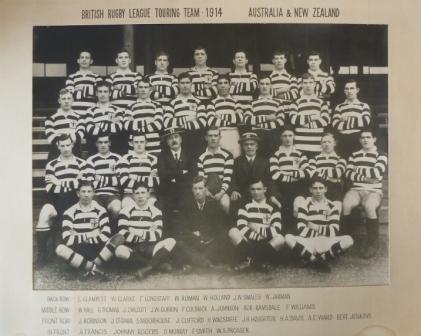
In 1914 the Great Britain rugby league team toured Australasia and on 4th July 1914 they emerged victorious against Australia in a historic match which was to become known as the Rorke’s Drift Test.
As part of the 2014 Four Nations the England team wore commemorative jerseys to celebrate 100 years since the Rorke’s Drift Test; and in July a commemorative dinner was held with a souvenir menu featuring a history of the tour illustrated with images from the Rugby Football League Archives which are cared for here at Heritage Quay.
To see a copy of the souvenir menu head over to the Rugby League Cares website.
Final tests… for us!
Now that the Archive staff have successfully moved into our new offices we are excitedly awaiting the handover of the rest of the space in order to get the collections in and start implementing our plans to get the public and the university community using the exploration and group spaces! We’re now so close we can really see how fantastic it’s going to look when completed, apart from some final construction work, all that’s really needed is for us to do our bit and populate it with collections related material!
We’ve had a couple of ‘test’ events this week (well real events, but a chance for us to test our up till now theoretical processes and procedures!), with some of our friendly local community groups holding their events in the space and giving us feedback about what we need to tweak before we open to make sure the space can adapt to big and small groups, and people with different requirements and needs. First up, the press launch of the forthcoming travelling Rugby League exhibition, which saw the space decked out with Rugby League Cares bright and sleekly designed exhibition boards (which went down well amongst us Archivists!), those involved with setting up and supporting the exhibition, and local and national press!


A few hours later we welcomed our friends from the Huddersfield Local History Society who are hosting their monthly meetings with us this year after outgrowing their previous venue. Over 120 people joined former Huddersfield lecturer, MP, and a depositor to our archives, Lord David Clark , who gave an entertaining and informative talk on Early Labour Pioneers in the Huddersfield area. Now members know where we are (and we know we need to deploy maximum chairs!) we look forward to welcoming them back every month, and you can find out more about forthcoming talks at this link or by visiting the society’s page, linked from their name above.

From our point of view, this week has been useful to test out how our behind the scenes admin processes will work, from the basics of running out of hours events and dealing with new departments in the university to make that happen, to how long it takes to turn around the space between events, and what the spaces actually feel like when there’s a talk to over a hundred people going on! There are still inevitably tweaks to be made, and we’ve welcomed the valuable feedback from both organisations who have hosted events with us this week. Hopefully they will see the improvement in their next event, and other groups will benefit from them taking the time to work with us during this bedding in period.
I’ll close with our other exciting technological development that we’ve recently seen running in its home environment, and are excited about our visitors getting to use! If the still image below whets your appetite, you can view the video of it in action from our developers Wide Sky!






